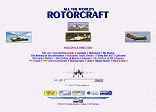 |
Learjet 35/361973 |  |
| EXECUTIVE TRANSPORT | Virtual Aircraft Museum / USA / Learjet |
 |
Development by Garrett of the TFE731 turbofan engine, promising lower noise levels and greater fuel economy than the General Electric CJ610 turbojet which had been the standard Learjet engine, led to the Learjet 35 and Learjet 36 introduced in 1973. It had been intended originally to develop additional versions of the Learjet 25 as the Learjet 25B-GF (Garrett fan) and Learjet 25C-GF. A Learjet 26 served as, the engine test-bed, with a 1588kg thrust TFE731-2 engine in the starboard nacelle and the CJ610 retained on the port side. It was flown on 4 January 1973 followed by a second Learjet 25 with two TFE731-2s and, on 22 August 1973, the first Learjet 35 took to the air. Compared with the Learjet 25s, the new Learjet 35 and Learjet 36 each had a 0.33m increase in length and, a 0.61m extension to each wingtip, outboard of the ailerons. They differed in fuel/seating capacity, the Learjet 35 carrying a maximum of eight passengers and, with reduced payload, having transcontinental range; and the Learjet 36 seating up to six passengers but with the ability to trade two of them for the extra fuel to give non-stop capability across the North Atlantic. Certification was gained and the first deliveries made in 1974. Two years later golf professional/ pilot Arnold Palmer used a Learjet 36 to establish a new round-the-world class record of 36990km completed in an elapsed time of 57 hours 25 minutes 42 seconds. Incorporation of the cambered wing and aerodynamic developments introduced in the other members of the Learjet family in 1976 brought redesignation to Learjet 35A and Learjet 36A, and steady product improvement has continued from.that time. The US Air Force leased 84 Model 35As as operational support aircraft between 1984-85 and bought them outright in 1986. These six-to eight-seat light jets are designated C-21A and were joined by four more in 1987. By 1991 around 750 Learjet Model . 35/36 variants had been sold, including approximately 200 special mission versions to 20 customers around the world.
|  COMPANY PROFILE | |||||||||||||||||||||||||||||||||||||||||||||||||||||||||
 |

|

